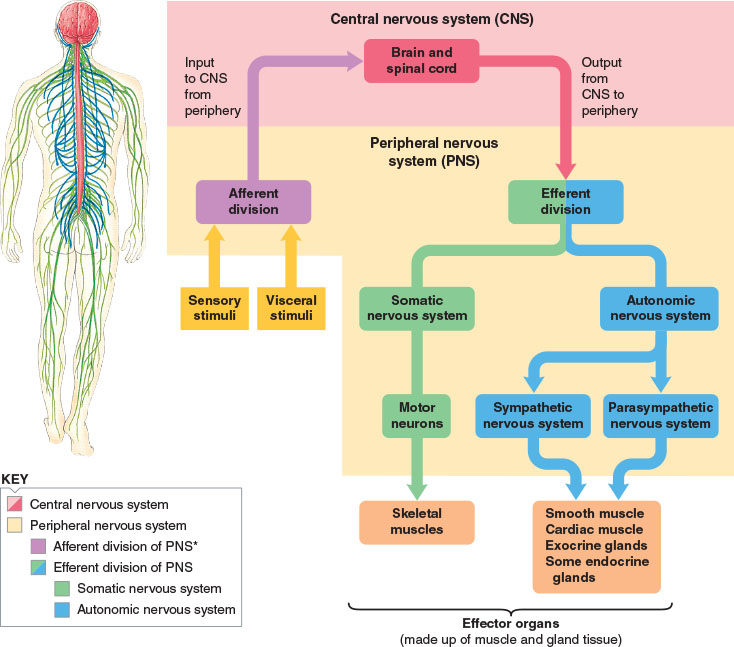The Nervous System
With over 7 individual organ systems functioning to perform different duties in the human body, one system is necessary to oversee that overall functioning is projected in a positive direction. This is a responsibility of the nervous system.
|
|
Composed of the brain, spinal cord, nerves, and sensory organs – the nervous system works as a control center for multicellular organisms by allowing communication to occur between the organism and its environment, or simply among its body parts. There are two divisions of the nervous system:
- The central nervous system (CNS) which is composed of the brain and spinal cord, and
- The peripheral nervous system (PNS) which is mainly made up of nerves and sensory receptors.
The CNS works subconsciously and even unconsciously to maintain a stable internal environment, called homeostasis, by regulating the fluctuation of internal and external conditions of an organism. Consciously, the CNS is capable of higher functions such as learning and expressing emotion.
The PNS has two branches:
- A defined voluntary branch called the somatic nervous system (SNS) that is only responsible for conscious body movement, and
- An involuntary branch referred to as the autonomic nervous system (ANS) that subconsciously controls the functioning of inner tissue.
The ANS is further divided into the sympathetic and parasympathetic nervous systems, whose functions in fact, oppose each other. The sympathetic nervous system prepares the body for a “fight-or-flight” response by releasing adrenaline to increase respiration and heart rate when an organism faces a stressful situation. However, the parasympathetic nervous system acts to lower respiration and heart rate after a stressful situation in a “rest-and-digest” response to ultimately allow the organism to return to its normal, relaxed state.
- Log in to post comments

